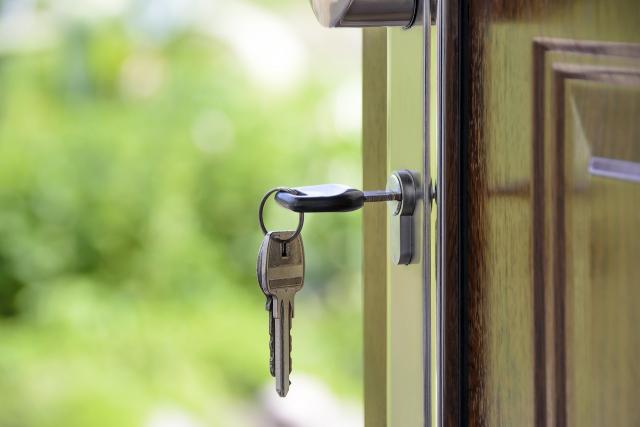
By Callum Ludwig
New data has identified the outer-eastern areas of Melbourne as a desert for rental availability, with local government areas (LGAs) such as the Yarra Ranges, Knox and Maroondah struggling with a dearth of available properties.
PropTrack, a property market data intelligence company which was acquired by the REA group (which operates realestate.com.au) in 2018, has revealed that the outer-east region of Melbourne, which includes the Whitehorse, Knox, Yarra Ranges, Maroondah and Manningham LGAs, has a staggering low rental vacancy rate of just 0.48 per cent in March 2024.
PropTrack Economist Anne Flaherty said Melbourne’s outer east has been the city’s best performing region over the past 12 months, with more buyers and renters looking to move into the area.
“The outer east tied for the lowest vacancy rate in the country over March, with just 0.48 per cent of the region’s rental properties sitting vacant,” she said.
“Demand isn’t just being driven by renters, with the outer east seeing the strongest growth in the median home price of any region in Melbourne over the past 12 months.”
Despite the already low percentage of vacant rentals, the outereast region still saw a downward trend in the number of available rentals with quarterly and yearly decreases of 0.17 and 0.26 per cent respectively.
Ms Flaherty said driving the outperformance of the outer east is the fact that the region ticks many of the key boxes for buyers and renters.
“These include excellent road and public transport infrastructure, easy access to employment hubs, schools, and hospitality and retail amenity,” she said.
“Add to this the lifestyle appeal of the region which provides plenty of green space and access to areas such as the Dandenong Ranges and the Yarra Valley.”
According to current listings on realestate.com.au, rentals are available in spatterings in key urban townships and drop off a cliff after entering even slightly more rural areas:
Ferntree Gully and Boronia in the suburban foothills of the Dandenong Ranges have some availability with 27 and 24 properties currently available between them, though the area remains highly competitive as Ray White Ferntree Gully head of property management Jenny Bolch told the Star Mail in July 2023, with an average of 11 applicants per property and a turnover of 163 properties from over 1700 applications in a quarter alone last year.
In the Yarra Ranges, Mooroolbark stands out as the most prevalent place for rentals with 28 while Kilsyth is the only other suburb in the double digits with 10. Other larger suburbs like Lilydale (seven) and Chirnside Park (five), while in nearby Maroondah Croydon and Croydon North still only combine for 22 available properties. Ringwood, despite hosting more apartment-style accommodation, also only has 34 properties on offer.
Stepping into the townships on the fringes of suburbia tells a damning tale for rental home hunters as availability tanks:
In the first step outside of larger suburbs, Montrose (zero), Mt Evelyn (one), Wandin North (zero), Coldstream (zero), The Basin (three) and Upwey (three) don’t offer much promise.
In the hills, Monbulk (two), Olinda (two), Belgrave (one) and Emerald (two) options are limited, as it is in the Upper Yarra with Seville (zero), Woori Yallock (one), Launching Place (zero), Yarra Junction (zero), Wesburn (zero), Millgrove (one) and Warby (one) all pretty barren.
Finding a home in the Valley won’t be much easier as Healesville (four) and Yarra Glen (zero) also look bleak.
Director of Community Engagement at Tenants Victoria Farah Farouque said too many Victorian renters looking for safe, secure and affordable housing are facing excruciating challenges amid this elongated renting crisis.
“What we’ve seen is that, amid record low vacancy rates, no area of Melbourne is immune from the crisis and that extends to the urban fringe where traditionally people had headed to find more affordable rental housing,” she said.
“It’s really tough out there for singles, families and retirees on low and, increasingly, middle incomes who have to compete in the private rental market,”
“Part of the solution has to be to build more social housing, that is homes owned by not-for-profits or government, and can be leased out at more affordable rates.”
2021 Census data indicated there were 36,705 rented properties in the Outer East, which assuming the same number of properties were still rentals now means only 176 rental homes are currently vacant.
The data comes out at a time when Melburnian social media star and law graduate Jordan van den Berg has begun taking submissions of homes that have been vacant for over two years, and linking them to those facing homelessness and severe housing stress to legally squat in. Mr van den Berg has grown a following of over 184,000 on TikTok and over 50,000 on Instagram, largely advocating for greater rights for renters, improved quality and safety of ‘Shit Rentals’ and highlighting instances of poor conduct from real estate agencies.
The move has been divisive as Mr van den Berg was questioned by panellists on The Project on Monday 8 April, who asked whether it was a ‘sensible’ solution and if the response to the crisis should be focused on policy instead.
When asked if he thought encouraging people to squat in private properties was the right way to fix the issue by The Project co-host Sarah Harris, Mr van den Berg said ‘let me answer your question by asking you a question.’
“Do you think it’s right we have thousands of vacant, abandoned homes while we have people living on the street,” he said.
According to an ‘Administrative data snapshot of housing’ released by the Australian Bureau of Statistics at the end of August 2023, the experimental data showed the percentage of ‘active houses’ that showed signs of recent use:
In the Outer East, the Yarra Ranges LGA had 446 (0.8 per cent) inactive houses, Maroondah had 314 (0.7 per cent) and Knox 291 (0.5 per cent).






